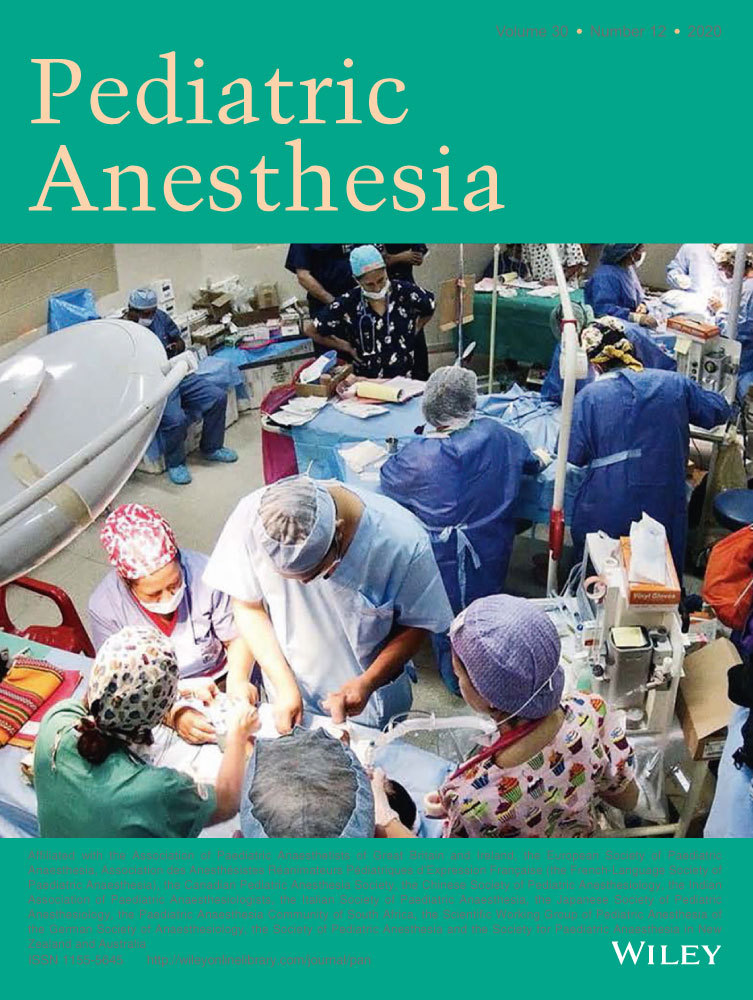Outcomes from wake up safe, the pediatric anesthesia quality improvement initiative
Funding information
The study was funded by departmental sources.
Abstract
Background
Wake Up Safe, a Patient Safety Organization founded by the Society for Pediatric Anesthesia, collects data on serious adverse events along with demographic data from all pediatric patients receiving anesthesia care at participating institutions. This report reviews all events occurring between 2010 and 2015 and focuses on common adverse events that are anesthesia-related.
Aims
Determine which adverse events were most common from 2010 to 2015 among participating Wake Up Safe institutions. Determine how many anesthesia-related events were deemed to be preventable.
Methods
This is a descriptive report. The Wake Up Safe registry data were queried on September 29, 2017. Institutions were included if they had complete demographic data and at least 5 adverse events per year reported. At that time, 19 out of 29 institutions had complete demographic data for events from 2010 to 2015. This study describes demographic data and adverse events from these nineteen institutions. Descriptive data were extracted, and event rate was calculated for each adverse event category. In events that were assessed as primarily related to anesthesia, further detailed analysis was performed.
Results
Of all reported adverse events (2544 events), the most common were cardiac arrests (646, 31.6%), respiratory complications (598, 29.2%), and medication events (345, 16.9%). Of all anesthesia-related events (612 events), medication events were the most common (239, 31.9%), followed by respiratory complications (181, 24.1%), and cardiac arrests (139, 18.5%). Overall, 85% of anesthesia-related serious adverse events were deemed somewhat or almost certainly preventable.
Conclusions
The majority of anesthesia-related serious adverse events reported to the Wake Up Safe database are preventable. Medication events are the most common anesthesia-related adverse events. Innovations aimed at decreasing medication events may be the most impactful.
CONFLICT OF INTERESTS
The authors report no conflict of interest' and we should should add this if the authors reply there are no conflicts.




